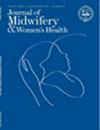The Effects of Interventions During Pregnancy to Improve Breastfeeding Self-Efficacy: Systematic Review and Meta-Analysis
Abstract
Introduction
Breastfeeding self-efficacy can be increased through effective interventions to improve breastfeeding rates and promote maternal and infant health. Improving breastfeeding self-efficacy in the prenatal period is important for successful breastfeeding and sustainable breastfeeding practices after birth. Although randomized controlled trials have shown that antenatal and postnatal interventions can boost breastfeeding self-efficacy, evidence is lacking on which interventions are most effective and on the key characteristics of such interventions. The purpose of this review was (1) to examine the effects of various antenatal interventions on breastfeeding self-efficacy and (2) to identify the most effective intervention.
Methods
In this meta-analysis, randomized controlled trials and experimental studies were searched using 5 search engines in accordance with the Preferred Reporting Items for Systematic Reviews and Meta-Analysis protocols declaration guidelines. In total, 34 studies were identified, which included 4698 participants. A random effects model, subgroup analysis, and meta-regression analysis were used to pool the results.
Results
During pregnancy, all types of interventions except model-based counseling provided without prior education and simulation methods have been effective in increasing breastfeeding self-efficacy (P <.05). Intervention type was the only intervention characteristic that showed statistically significant differences in effect size using the between-group heterogeneity statistic (QB, 13.888; P = .016). A meta-regression analysis found a significant effect of differences in intervention types across studies (heterogeneity: τ2, 0.672; Q value = 662.100; df = 33; P < .001; I2 = 95.016%; test for overall effect: z, 7.020; P = .001), and this difference was found to be due to model-based education and counseling, which had the largest effect size in increasing breastfeeding self-efficacy. Intervention type explained 16% of the relationship between interventions to increase breastfeeding self-efficacy during pregnancy and breastfeeding self-efficacy (r2 = 0.16).
Discussion
There is a relationship between the types of interventions for breastfeeding during pregnancy and breastfeeding self-efficacy. To increase breastfeeding self-efficacy during pregnancy, it is recommended that health care professionals primarily develop programs that include model-based education and counseling.


 求助内容:
求助内容: 应助结果提醒方式:
应助结果提醒方式:


